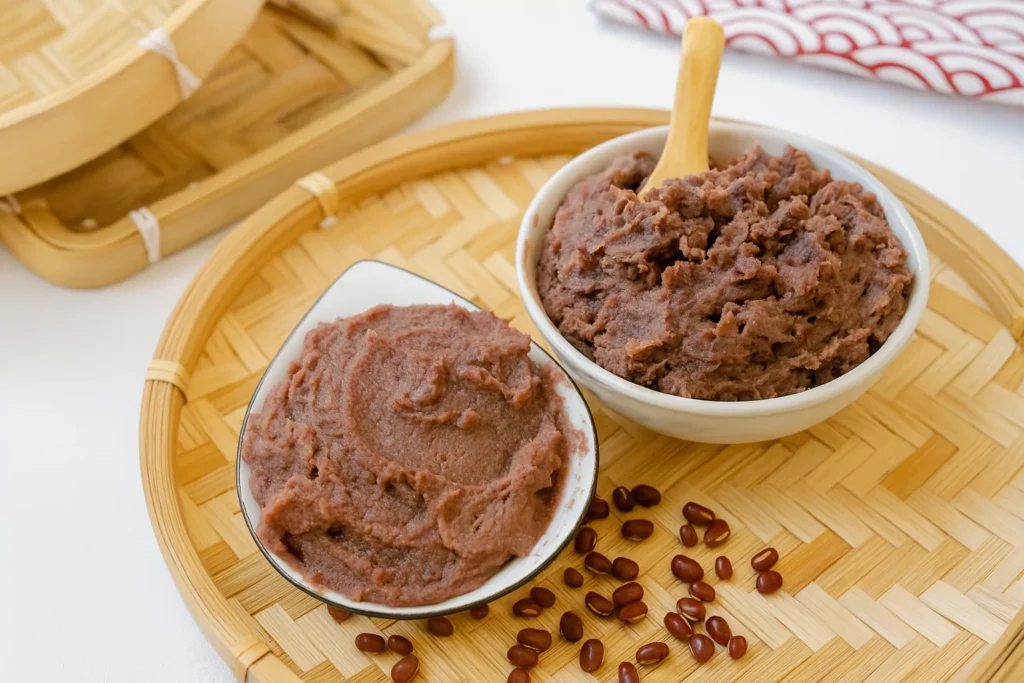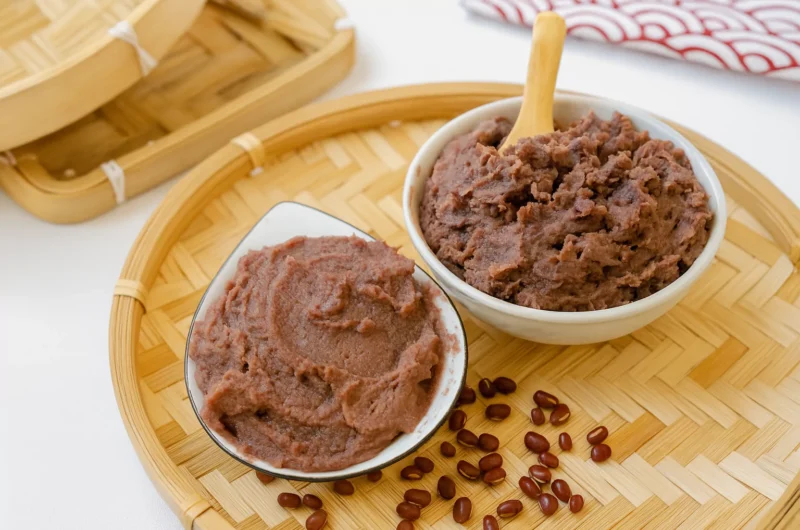Have you ever wondered what gives Japanese sweets that naturally sweet, rich, and comforting flavor? It’s not chocolate or vanilla—it’s something even more unique and traditional: red bean paste, known in Japan as anko (餡子).
Whether you’ve tasted it in mochi, dorayaki, or taiyaki, anko is a fundamental part of Japanese desserts. But did you know you can make it at home with just a few simple ingredients?
In this guide, you’ll learn exactly how to make authentic red bean paste from scratch—step-by-step. You’ll also pick up expert tips, learn how to store it, and discover fun recipe variations.
Let’s get started with the magic behind this versatile paste!
Table of Contents
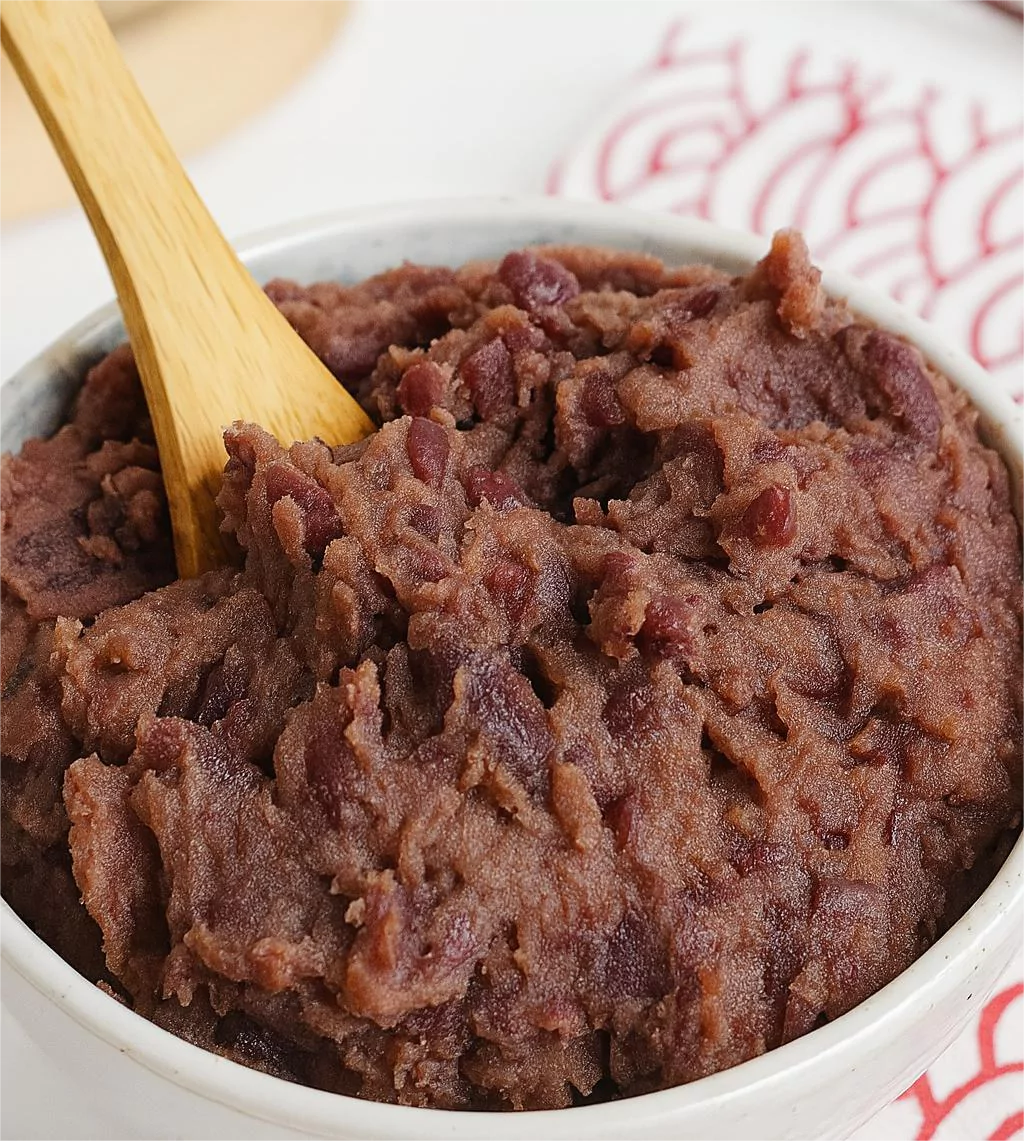
Red Bean Paste @JapanDishes
Why This Red Bean Paste Recipe is Special
Homemade red bean paste tastes richer and more natural than any store-bought version. It’s made with dried azuki beans, sugar, and salt—no artificial flavors, preservatives, or mystery ingredients.
Time requirement: Around 2–3 hours (mostly simmering time)
Skill level: Beginner-friendly with simple steps
Special feature: Can be customized into two styles—tsubuan (chunky) and koshian (smooth)
Plus, it’s budget-friendly, healthy, and deliciously sweet without being overwhelming. It’s perfect for adding that “wow” factor to your homemade Japanese sweets.
Jump to Recipe Print RecipeWhat Is Anko (Red Bean Paste)?
Anko (餡子) is a sweetened paste made from azuki beans, commonly used in Japanese and East Asian desserts. While it’s called “red bean paste” in English, there are different kinds depending on texture and sweetness.
- Tsubuan: Chunky and rustic
- Koshian: Smooth and refined
Both are made from the same ingredients—the only difference lies in how they’re processed after cooking.
Anko is often used in:
- Mochi
- Dorayaki (Japanese pancakes)
- Daifuku
- Manju (steamed buns)
- Zenzai (sweet soup)

Azuki Beans @JapanDishes
Essential Ingredients
Here’s what you’ll need to make red bean paste at home:
Main Ingredients
- 7 oz dried azuki beans (about 1 cup): These small red beans have a slightly nutty, earthy flavor and are essential for authentic anko.
- Water: Used throughout the cooking and parboiling process.
- ¾ cup sugar (or up to 1 cup/200g, to taste): This adds the sweetness. Adjust based on your dessert’s flavor profile.
- ½ tsp kosher salt (preferably Diamond Crystal): Enhances the sweetness and balances the flavor.
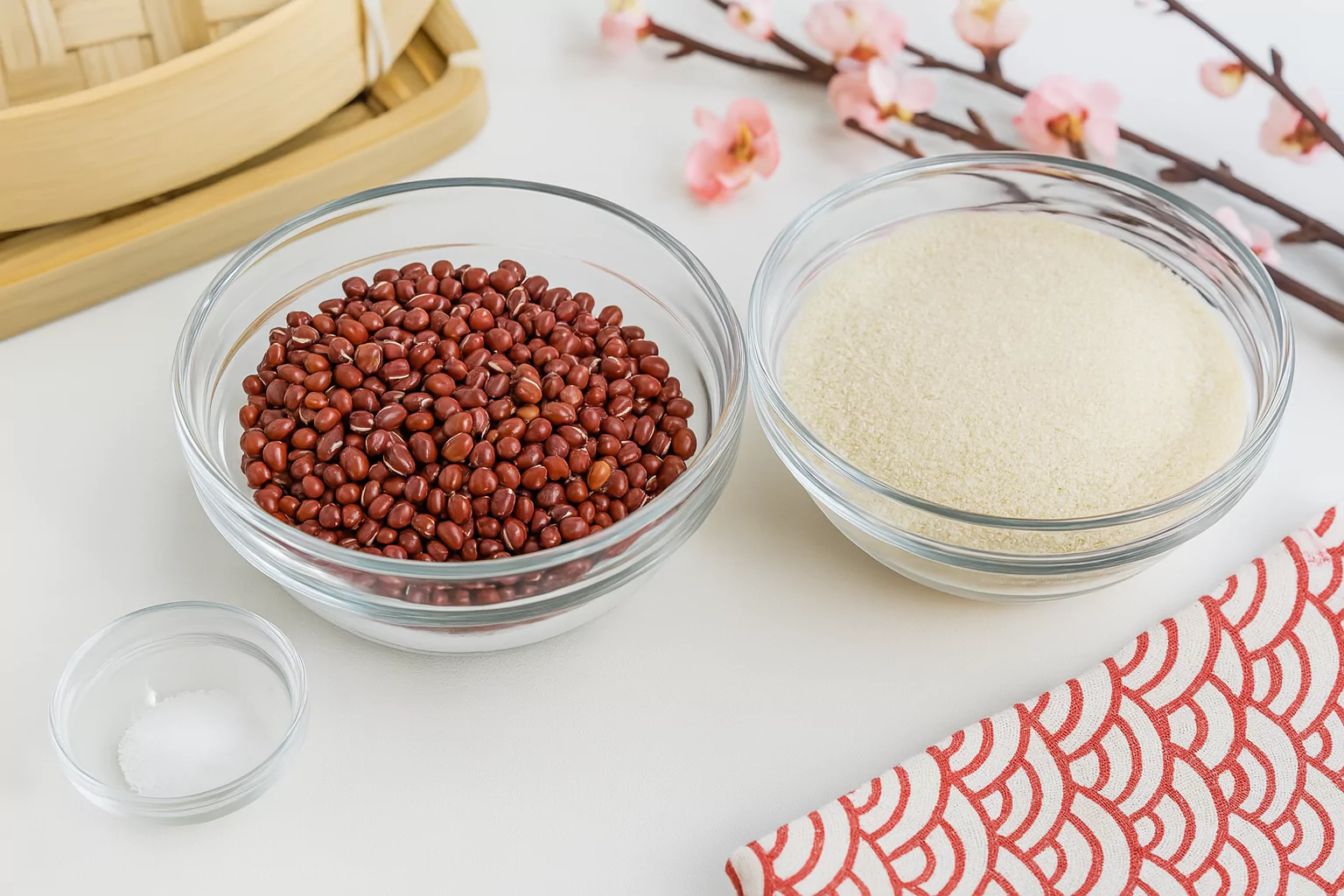
Red Bean Paste Ingredients @JapanDishes
Ingredient Tips & Substitutions
- If you can’t find azuki beans, mung beans or black beans can work in a pinch, but they’ll have a different taste and color.
- For a lower-sugar version, reduce the sugar slightly and add a drop of stevia or honey to preserve sweetness.
- To make it vegan or gluten-free—no changes needed! It’s naturally both.
Step-by-Step Instructions: How to Make Red Bean Paste
Let’s walk through the method from dried beans to perfect red bean paste.
Step 1: Rinse the Beans
Rinse the dried azuki beans under cold water. Discard any broken or discolored beans.
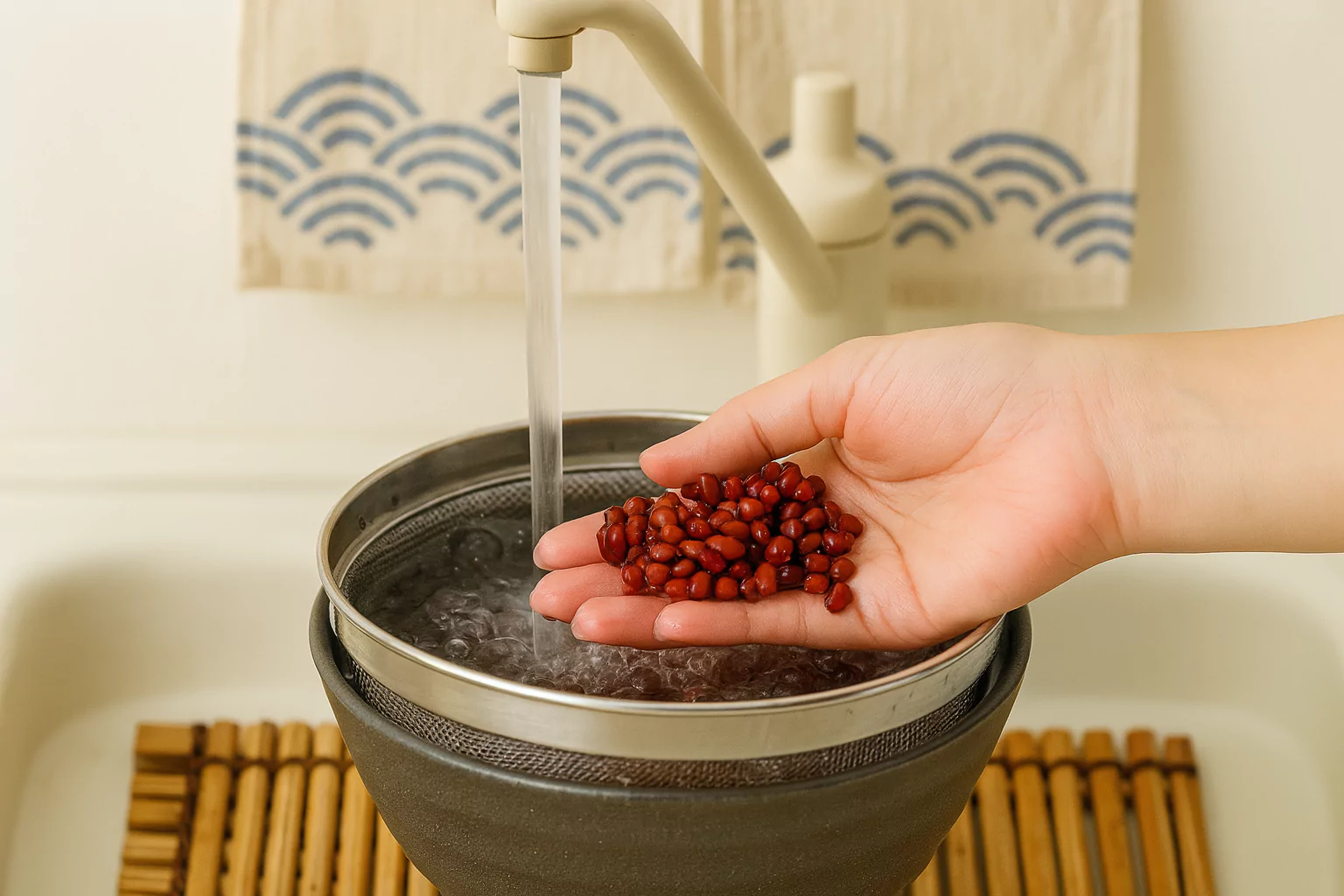
Step 2: Parboil the Beans
Transfer the beans into a large pot. Cover them with water (about 1–2 inches above the beans).
Bring to a boil on medium-high heat.
Once it starts boiling, remove from heat and drain the beans in a fine mesh strainer.
Why parboil? This step helps remove bitterness and improves texture.
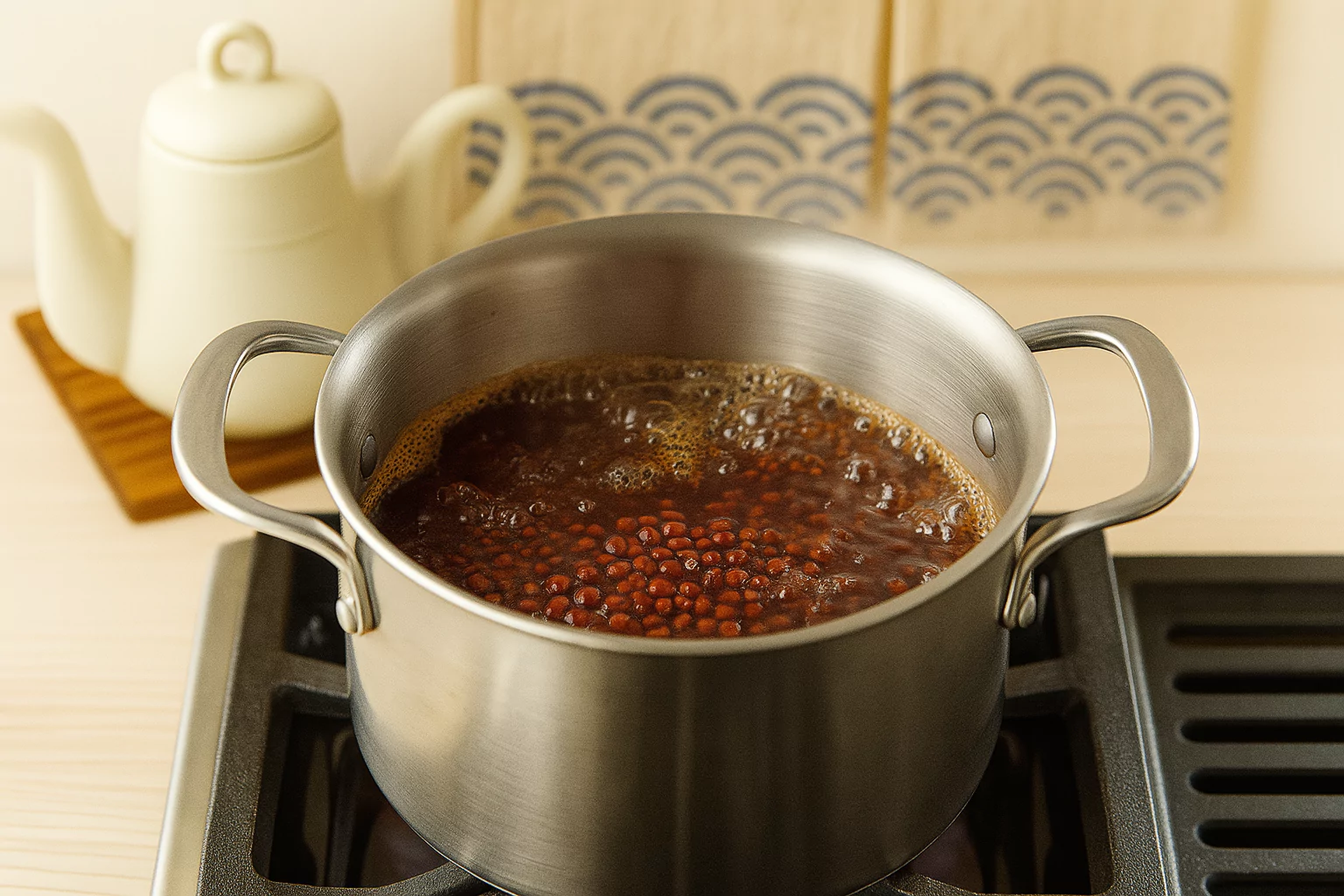
Step 3: Simmer the Beans
Return the drained beans to the pot. Add fresh water to cover the beans again by 1–2 inches.
Bring to a boil once more, then lower the heat to a gentle simmer. Place a drop lid (otoshibuta) on top—this keeps the beans from bouncing around and cooking unevenly.
Simmer for 1 to 1.5 hours. Check occasionally and add water if needed to keep the beans submerged.
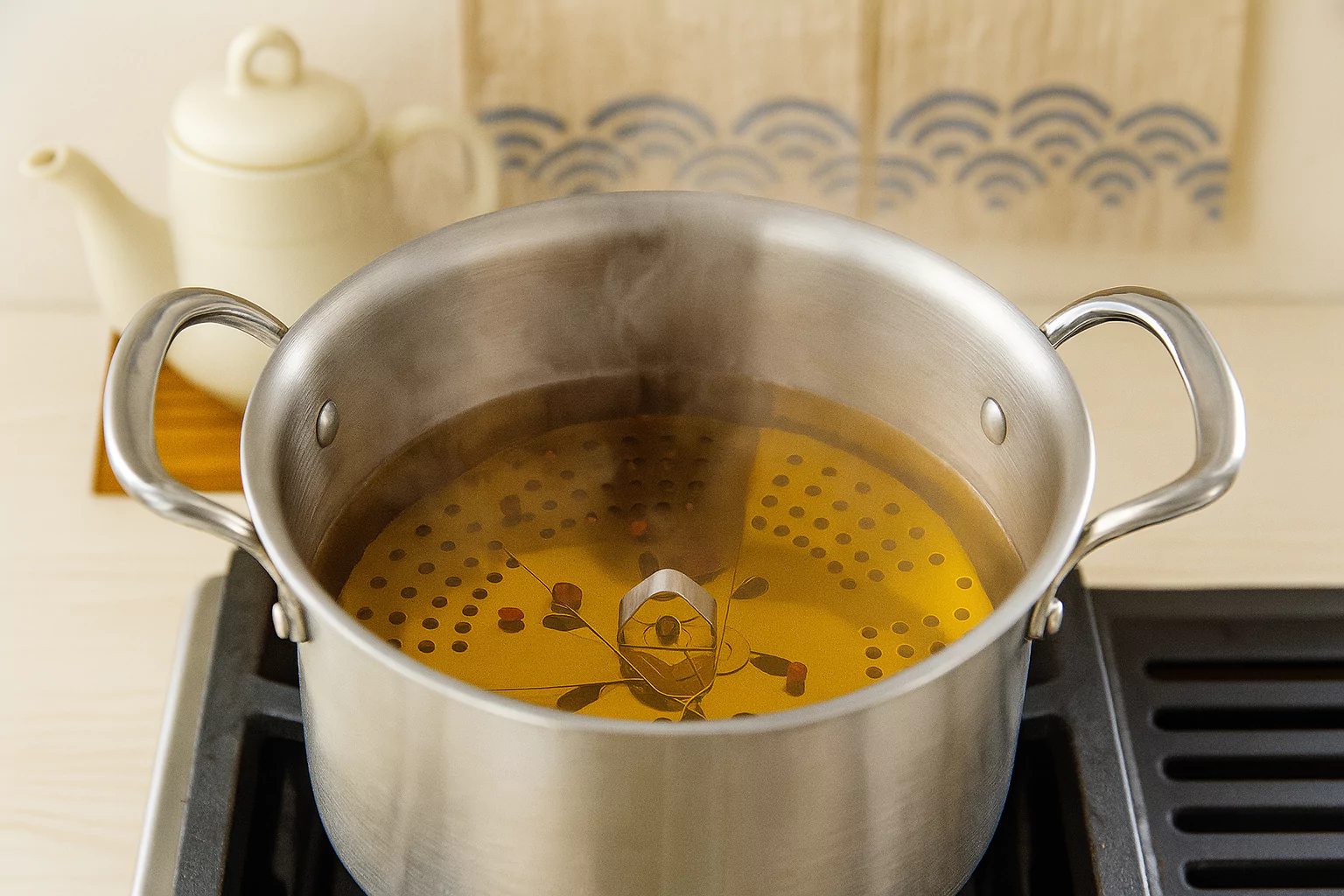
When the beans mash easily between your fingers, they’re ready.
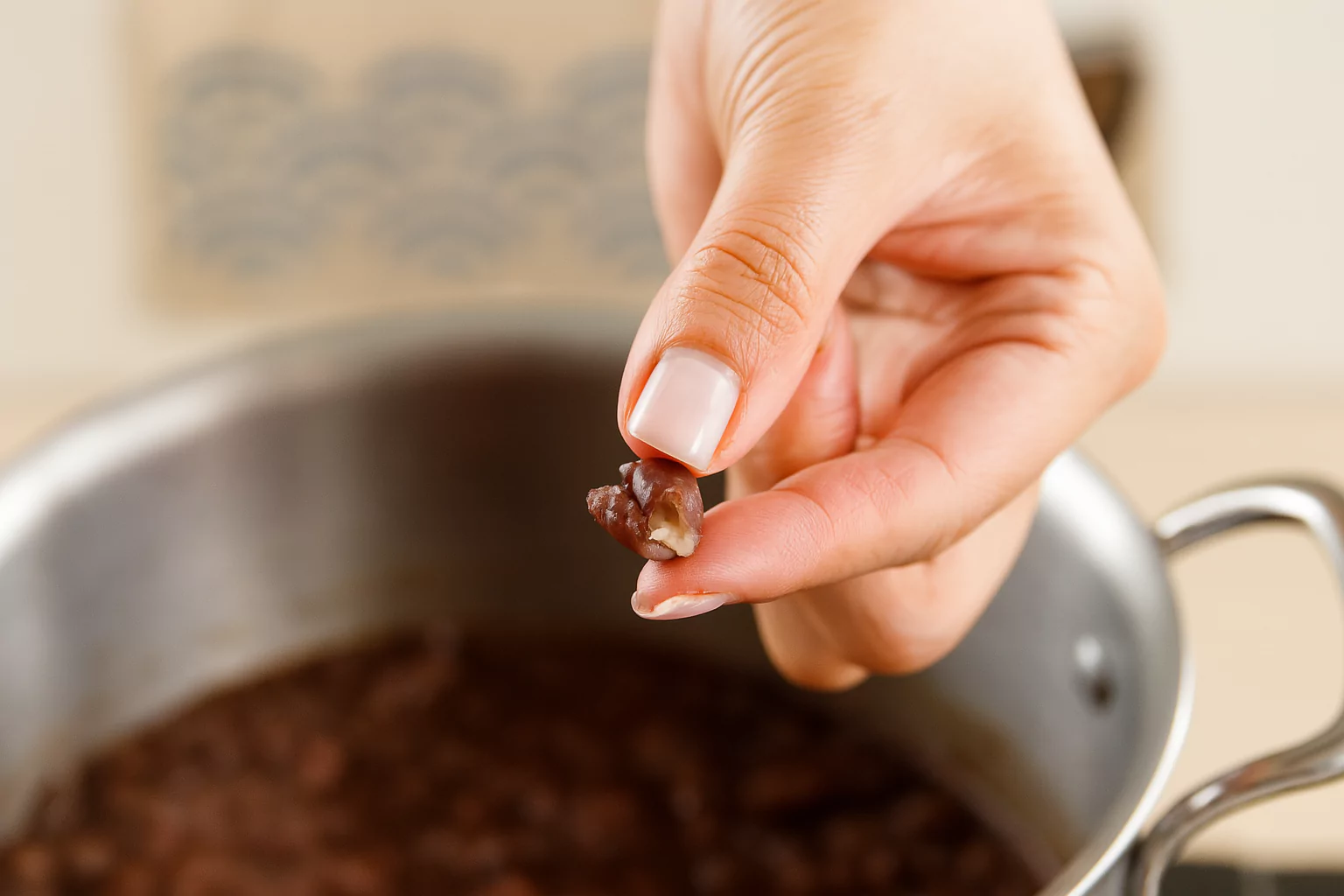
Secrets to Success and Expert Tips
Making red bean paste is simple, but here are a few expert tricks to make yours stand out:
- Use a drop lid (otoshibuta) to help the beans cook evenly without breaking apart.
- Don’t rush the simmering process. Azuki beans need time to soften properly.
- Taste as you go. Adjust sugar levels gradually—it’s easier to add than to remove.
- Let it cool fully. The paste will thicken significantly as it cools, so don’t worry if it looks loose while hot.
Two Styles: Chunky vs. Smooth Anko
1. To Make Tsubuan (Chunky Red Bean Paste)
- Drain the cooked beans.
- Return them to the pot and add half of the sugar. Stir on medium-low heat.
- Once dissolved, add the remaining sugar and salt. Keep stirring.
- Let the moisture evaporate. When you can draw a line on the pot’s bottom with a spatula, turn off the heat.
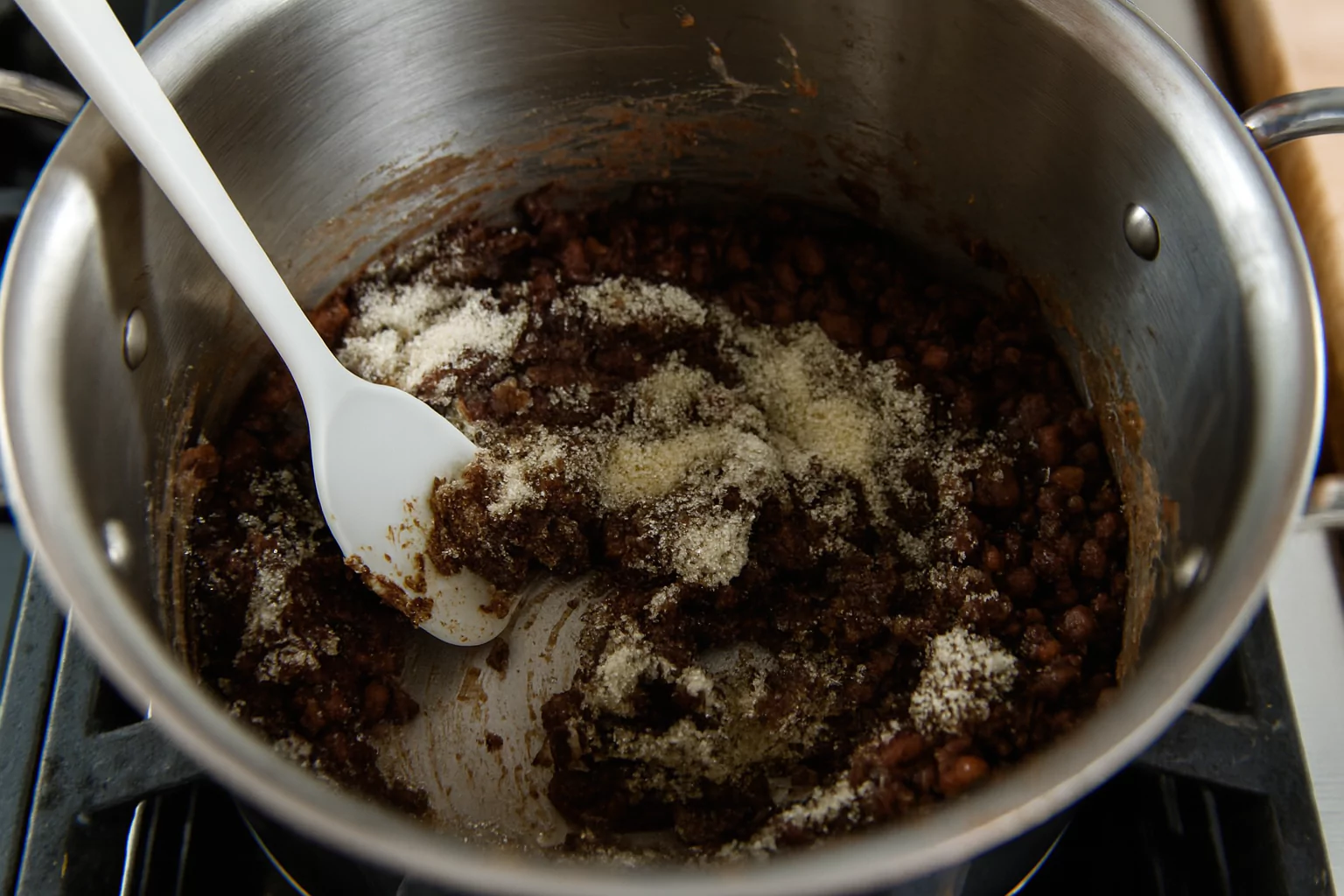
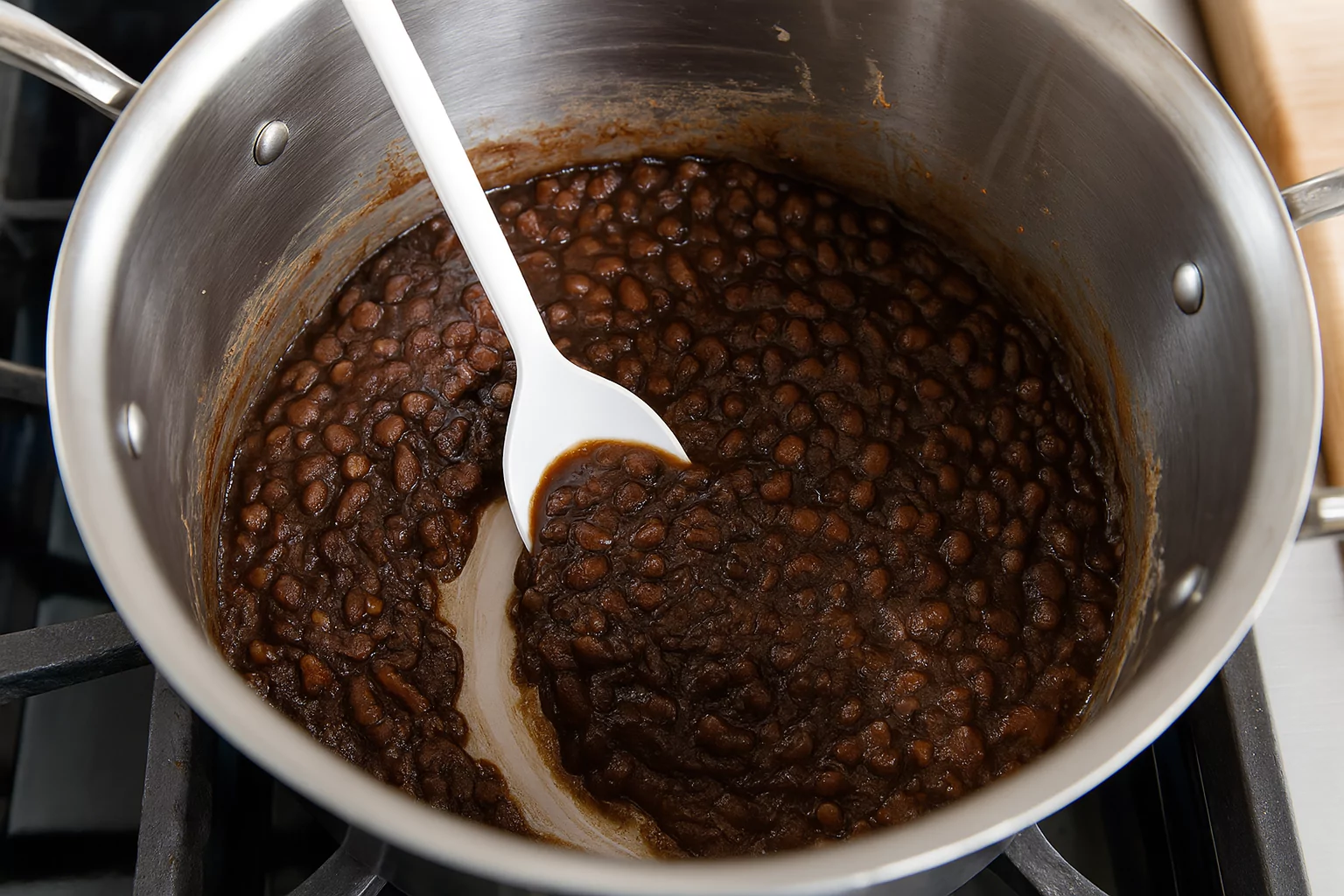
- Spread the paste on a baking sheet to cool completely.
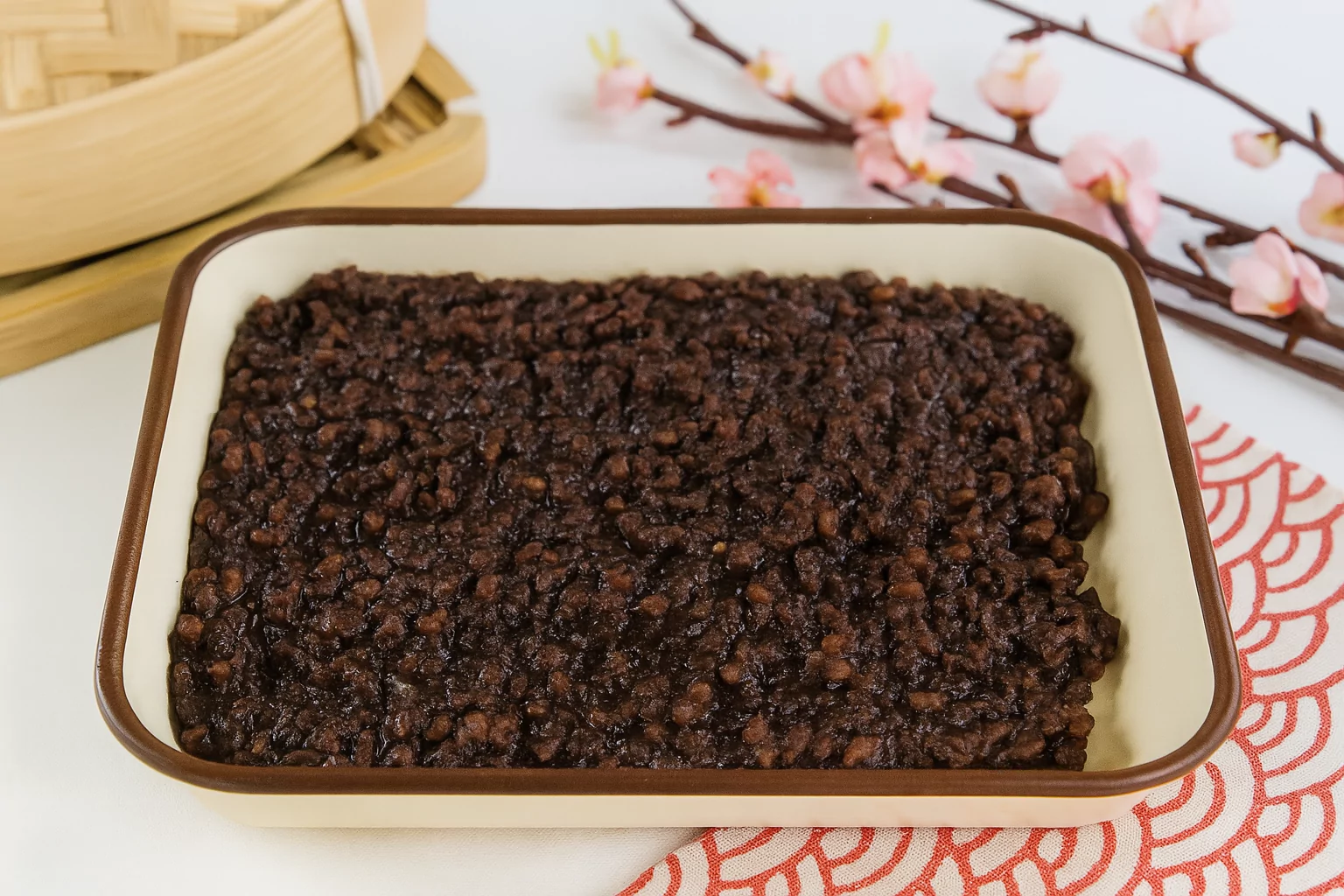
Tsubuan (Chunky Red Bean Paste) @JapanDishes
2. To Make Koshian (Smooth Red Bean Paste)
- Reserve some cooking water and drain the beans.
- Blend the beans in a food processor until smooth, adding reserved liquid as needed.
- Return the paste to the pot. Add sugar and salt as above.
- Stir and cook on low until thickened.
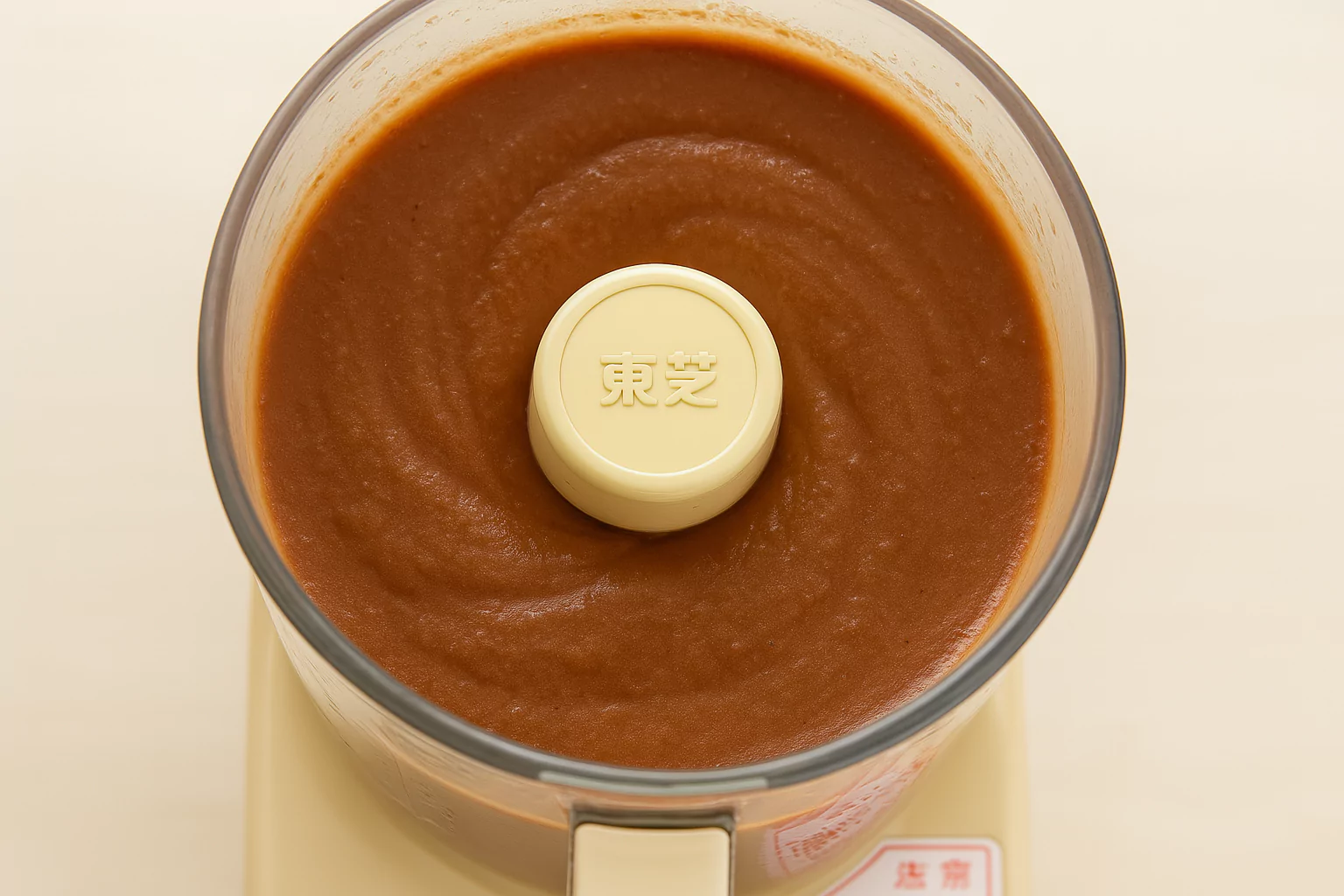
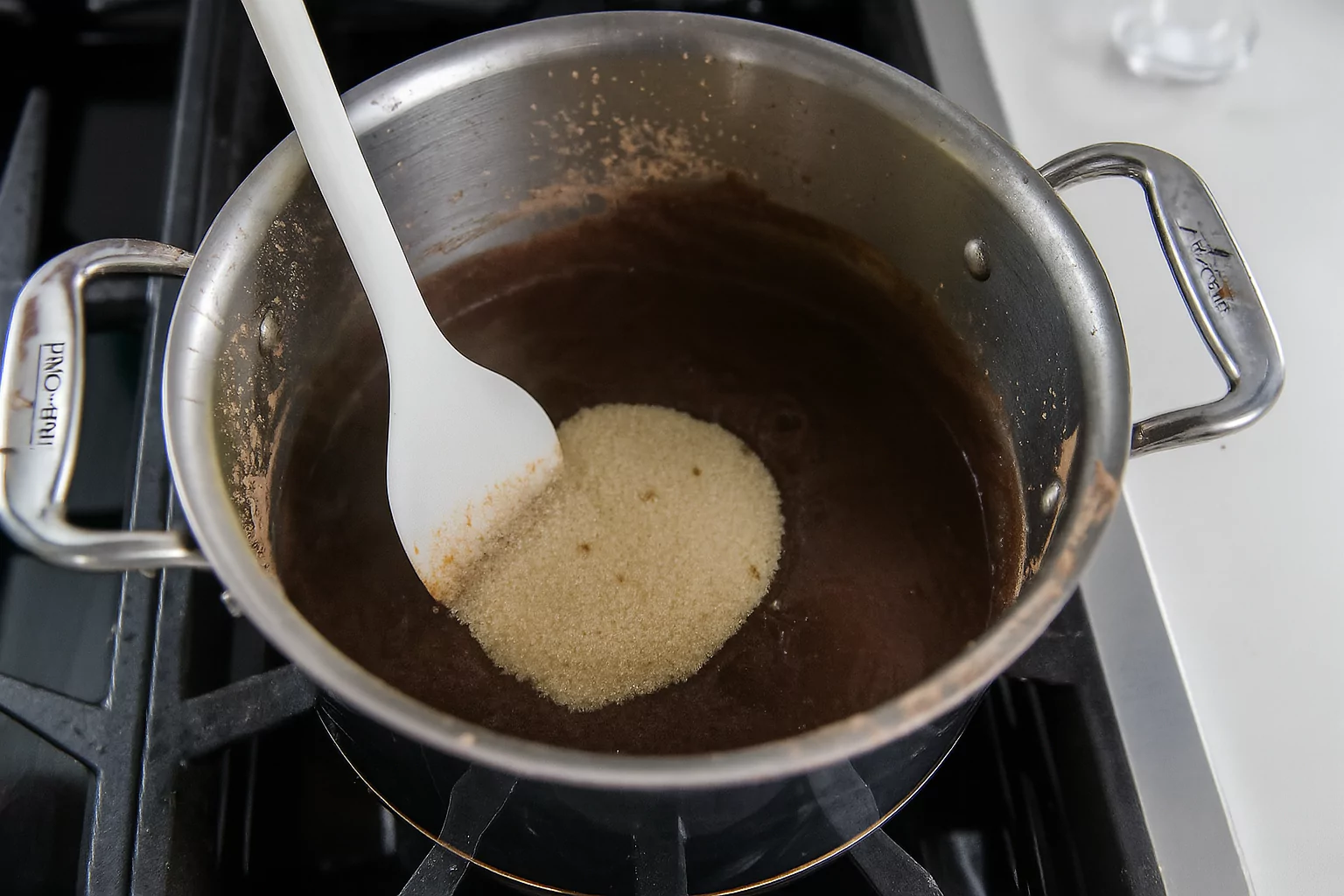
- Cool on a baking sheet.
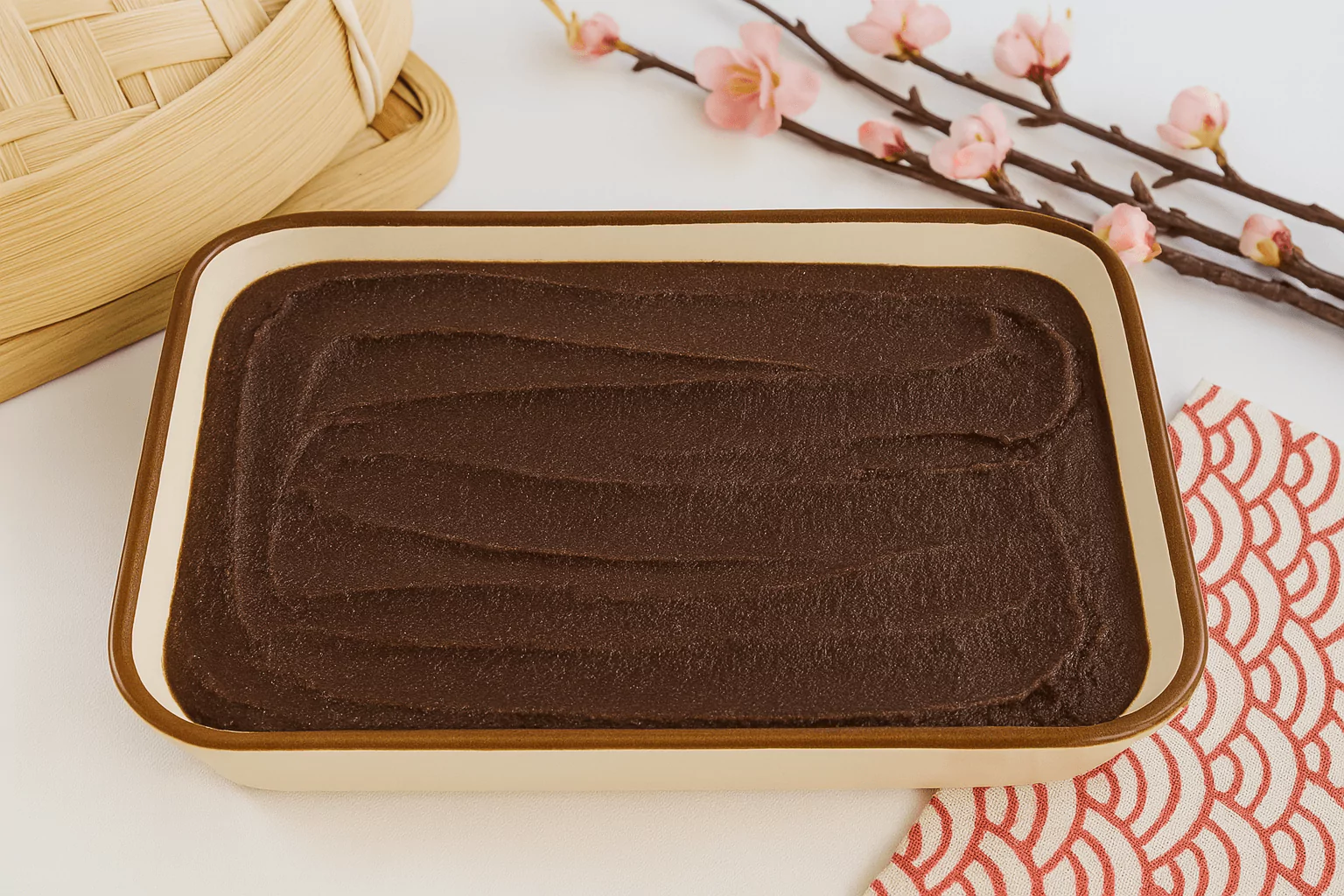
Koshian (Smooth Red Bean Paste) @JapanDishes
Assembly: How to Use Red Bean Paste in Recipes
Once cooled, your red bean paste is ready to be used in a wide range of desserts.
Ideas for Use
- Stuff inside daifuku mochi
- Spread between dorayaki pancakes
- Add a spoonful to ice cream or matcha lattes
- Swirl into buns or cakes before baking
Presentation Tips
- Use a piping bag for a clean, elegant finish.
- Shape into balls with damp hands for mochi or steamed buns.
- Pair with bright elements like green matcha or white mochi for contrast.
For example, try using it in a fruity, refreshing dessert like Strawberry Mochi (Ichigo Daifuku), where red bean paste pairs perfectly with sweet strawberries and soft mochi.
Hana’s Recipe Tips
Our friend Hana, who learned this recipe from her grandmother in Hokkaido, shares her go-to tricks:
“Always taste while you stir in the sugar—some beans need more, some less. And don’t skip the salt! It brings everything together.”
She also recommends making both chunky and smooth versions in one batch. That way, you have more flexibility when making desserts later.
Storage and Make-Ahead Tips
Refrigeration:
Store cooled red bean paste in an airtight container in the refrigerator. It lasts up to 1 week.
Freezing:
Portion into small freezer bags or containers. Freeze for up to 2 months. Thaw overnight in the fridge.
Reheating:
If needed, gently reheat over low heat while stirring. Add a splash of water if it’s too thick.
Recipe Variations
Want to mix things up? Try these twists:
- Matcha Red Bean Paste: Mix in a bit of matcha powder after cooking for a green tea flavor.
- Chestnut-Anko Mix: Blend with roasted chestnuts for autumn-inspired sweets.
- Less-Sugar Version: Reduce sugar by 25% and add a drop of stevia or monk fruit.
You can also use white beans instead of red to make shiro-an, a creamy white version of anko.
Red Bean Paste: How to Make Anko 餡子 at Home
Course: DessertCuisine: JapaneseDifficulty: Medium8-10
servings15
minutes1
hourApprox. 150 per 1/4 cup (for sweetened red bean paste)
kcalThis homemade red bean paste (Anko 餡子) is a sweet, smooth, or chunky filling made from azuki beans. Perfect for mochi, pancakes, and traditional Japanese desserts, it’s simple to prepare and full of authentic flavor.
Ingredients
7 oz dried azuki beans (just under 1 cup)
Water (enough to cover the beans several times)
¾ cup white sugar (adjust to taste; up to 1 cup)
½ tsp Diamond Crystal kosher salt (or a pinch of sea salt)
Directions
- Rinse the Beans
Place azuki beans in a large bowl. Rinse well with cold water and remove any damaged beans. - Initial Boil (Parboil)
Add beans to a pot and pour in water until it’s 1–2 inches above the beans. Bring to a boil on medium-high heat, then drain the water completely. - Simmer Until Soft
Refill the pot with clean water (again 1–2 inches above the beans). Bring to a boil, then reduce to a gentle simmer. Cover with a drop lid (otoshibuta) if you have one. Simmer for 1–1½ hours, refilling water if needed. - Check for Doneness
The beans are ready when they can be easily mashed with fingers or the back of a spoon. Drain and set aside. - For Chunky Paste (Tsubuan)
Return the cooked beans to the pot. On low heat, stir in half of the sugar. When dissolved, add the remaining sugar and salt. Stir continuously until moisture reduces. Once you can scrape the bottom of the pot clean with a spatula, remove from heat and let cool. The paste thickens as it cools. - For Smooth Paste (Koshian)
Instead of returning to the pot, blend the beans in a food processor, adding a spoon or two of cooking water if needed. Then return the paste to the pot and follow the same steps as above: add sugar and salt, stir, and cook until thick.
Notes
- For best results, allow the paste to cool completely on a flat tray before storing.
Store in an airtight container in the fridge and enjoy within one week, or freeze it for up to two months for later use.
Perfect as a filling or topping for Japanese treats such as mochi, dorayaki, sweet buns, and other traditional desserts.
Conclusion
Making red bean paste at home isn’t just fun—it’s a way to connect with Japanese tradition through flavor and care.
By mastering this simple recipe, you can create endless sweet treats from your kitchen. Whether you like it smooth or chunky, subtle or sweet, your homemade anko will always beat store-bought.
So, gather your beans and start cooking. Once you try it, you’ll never go back.
And if you’re planning a trip to Japan and want to enjoy authentic sweets on the spot, check out this helpful guide on places to visit from Kyoto a perfect mix of culture, food, and sightseeing.
FAQs About Red Bean Paste
Q: Is red bean paste healthy?
Yes! Azuki beans are rich in protein, fiber, and antioxidants. When made with moderate sugar, red bean paste is a nutritious and balanced dessert ingredient.
Q: Can I use canned azuki beans?
You can, but dried beans give better flavor and texture. If using canned beans, rinse thoroughly and reduce cooking time.
Q: What’s the difference between anko and red bean paste?
They are the same! “Anko” is the Japanese name for red bean paste.
Q: How long does red bean paste last?
Store in the fridge for up to 1 week or freeze for 2 months. Always cool fully before storing.
Q: What desserts can I make with red bean paste?
Try daifuku, dorayaki, taiyaki, mochi, red bean ice cream, or sweet soups like zenzai.
If you enjoyed this guide, be sure to explore more Japanese dessert recipes—and let us know how your homemade red bean paste turned out!
